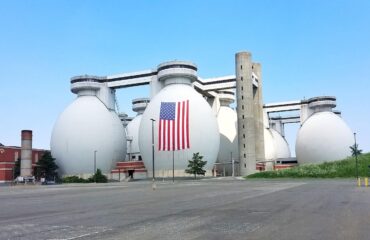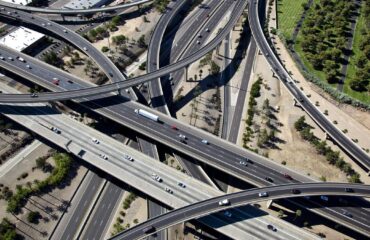In the quest for revolutionizing the way of life, emerging technologies show promise in facilitating more efficient and intelligent methods of mobilizing goods and individuals. Boosting efficiency reaches beyond basic transportation infrastructure, and influences sectors across the United States on a broader scale.
Broadband: The Lifeline of the 21st Century

Broadband constitutes one of the pivotal challenges of modern infrastructure. Not long ago, our communication devices were bound to landlines, with the idea of wireless, instant communication resembling a far-fetched dream. Yet, that so-called dream materialized into a reality where devices that were once state-of-the-art are now obsolete.
- Broadband access transitioned from a deluxe feature to a societal essential at a remarkable pace;
- The Pew Research Center’s 2019 report reveals an impressive 73% of American households enjoying broadband access, albeit with varying speeds;
- Moreover, the Information Technology and Innovation Foundation reports that an additional $5 billion in broadband investments generates 250,000 jobs;
- With each percentage point increase in broadband penetration, employment grows by an astounding 300,000 positions.
Broadband’s pivotal role in delivering a wealth of knowledge to educational institutes, households, and businesses is undeniable. Without it, the United States would significantly lag in the global competition. It is imperative that directed investments are made to expand our networks and bring higher-speed, top-quality broadband within everyone’s reach.
The Expanding Horizon of Autonomous Transportation
The advancement of autonomous vehicles (AVs) is poised to revolutionize the way we conceive of and engage with personal and public transportation. This cutting-edge technology aims to streamline traffic flow, leading to less congestion and improved fuel efficiency. Beyond the evident benefits of increased efficiency, AVs herald a new era of convenience and safety. Passengers will have the freedom to engage in other activities, such as replying to emails or calls, without the risks associated with distracted driving. A standout feature of autonomous vehicles is their ability to communicate with each other, a development that promises to drastically reduce the incidence of road accidents.
Moreover, AVs are set to dramatically enhance mobility for individuals with disabilities and the elderly, who might find driving traditional vehicles challenging. This technology is not just about improving current transportation systems; it’s about opening doors to those who have been underserved by them.
The surge in interest and research into AV technology has been remarkable, with various states and cities within the U.S., as well as nations around the globe, eager to explore and test these vehicles. This global momentum is mirrored in the U.S. through increased federal engagement, with the Department of Transportation issuing updated guidelines in 2018 for the safe experimentation and implementation of AVs. The legislative landscape is also adapting, with multiple bills introduced in Congress aimed at navigating the complexities of this emerging field. This widespread investment in autonomous vehicle technology underscores a collective drive toward a more inclusive, efficient, and safe transportation future.
Challenges in Integrating Driverless Technology

The integration of driverless technology brings numerous benefits, but it also presents several challenges that demand attention. These include cybersecurity risks, data security concerns, liability issues in accidents, insurance considerations, and the need to upgrade existing infrastructure to accommodate this innovation.
- Research from the National League of Cities indicates a significant oversight: only six percent of major U.S. cities’ transportation plans acknowledge the potential impact of driverless technology on mobility. This lack of foresight underscores the importance of proactive planning;
- For instance, road markings on America’s vast network of roads must meet specific criteria. They need to be solid, bright, and preferably white to be detected by the computer vision systems used in autonomous vehicles (AVs);
- Additionally, roadside infrastructure must be equipped with sensors to facilitate communication between vehicles and infrastructure.
Cities are also grappling with the potential loss of revenue from traditional sources like parking fees and revenues generated from red light and speed cameras. These revenue streams are at risk as driverless technology reshapes transportation dynamics.
Conclusion
The future of American technology promises remarkable transformations across various sectors, enhancing efficiency and productivity. Significant strides in broadband accessibility and autonomous vehicles already reflect this upward trajectory. Yet, as these technologies continue to evolve, it is critical to address the accompanying challenges. Through forward-thinking policies and proactive problem-solving, the United States can harness these technological advancements to their full potential, ushering in a future where technology truly serves all citizens.






